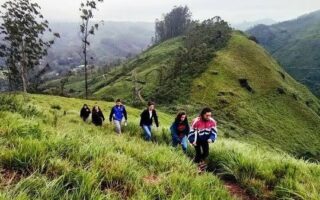Internet
A means of connecting a computer to any other computer anywhere in the world via dedicated routers and servers. When two computers are connected over the Internet, they can send and receive all kinds of information such as text, graphics, voice, and computer programs.
No one owns Internet, although several organizations viz. Telephone Companies (Airtel, Reliance, etc.) the world over collaborate in its functioning and development. The high-speed, fiber-optic cables through which the bulk of the Internet data travels are owned by above companies in their respective countries.
The Internet grew out of the Advanced Research Projects Agency’s Wide Area Network (then called ARPANET) established by the US Department of Defense in 1960 for collaboration in military research among business and laboratories. This resulted in ARPANET growing beyond everyone’s expectations and acquiring the name ‘Internet.’
The development of hypertext based technology (called World Wide Web, WWW, or just the Web) provided means of displaying text, graphics, and animations, and easy search and navigation tools that triggered Internet’s explosive world wise growth.
Browser
A browser, also referred to as a web browser. The software used to navigate through the web is known as a browser. It was created as a simplified means to present and explore content on the World Wide Web. Google Chrome, Microsoft Internet Explorer, Mozilla Firebox, Opera, Apple Safari, etc.
Browsing a data from Internet
With help of a browser program i.e. Chrome, IE, Firebox, Safar, Opera, etc., you can search a data across internet. Each browser has a search window, where you can type your searching word. Browser will list out the website address, which have the source related to the searching word. With help of hyper link concept, you can click on the relevant website address to get source.
Equipment required for an Internet Connection
Computer
Any good configured Computer System Units (16 mb RAM or more, 2 GB HDD or more, 200 mhz processor or more).
MODEM (MOdulator DEModulator)
It is a device that is used to transmit data over the network. Your computer sends data in BINARY CODE (DIGITAL) to your modem which converts the binary-coded data to an ANALOGUE signal. This data then travels along the telephone network. When the data reaches the destination computer, the modem connected to that computer converts the analogue signal back into binary coded data which can be read by your computer. Thus the modem transmits data over the network.
a) External Modem b) Internal Modem.
The External Modem has to be connected to your computer and telephone line with cables and electric socket.
The Internal Modem is already built inside your computer.
Telephone Line
It is essential to have a telephone connection to get connected to Internet. All the data and information pass through the telephone lines as anologue signals.
Internet Service Provider (ISP)
If you have a computer with a web browser, a modem and a telephone line connected to your computer, you now need an Internet connection. You can get an Internet connection from various Internet Service Providers (ISPs). Earlier in India, Inernet connection was only available through VSNL (VIdesh Sanchar Nigam Limited). Now, you can choose your ISP from among 120 companies which have been granted ISP licenses. Among them, the most popular ISPs are VSNL, MTNL and Mantra Online and also in our region AirTel, Reliance, Hutch, etc.,
A browser, also referred to as a web browser. It is essential to float on internet world. It is already discussed previous paragraph of this post.
What is WEBSITE and EMAIL ?
Website:
A Web site is a related collection of World Wide Web (WWW) files that includes a beginning file called a HOME page. A company or an individual tells you how to get to their Web site by giving you the address of their home page. From the home page, you can get to all the other pages on their site.
Email:
Email is short for electronic mail. Email (or e-mail) is defined as the transmission of messages over internet. Typically the messages are notes entered from the keyboard or electronic files stored on disk.
COMPOSE WINDOW in Gmail
Recipients: Click this text field to type email addresses. You can also click the Cc or Bcc links to add a new set of recipients. Drag and drop recipients from one field to another, or click the “x” to remove them from your message. Hover over the recipient to see details about them, or double-click on them to edit their address.
To: Any ID you add in this field receives a copy of that message / attachments etc.
Cc : “carbon copy” :
Any ID you add in this field receives a copy of that message when you send it. All other recipients of that message CAN SEE that person ID you designated as a cc: recipient.
Bcc: “blind carbon copy.”
Any ID you add in this field receives a copy of that message when you send it. But, bcc: recipients are INVISIBLE to all the other recipients of the message INCLUDING other bcc: recipients.
Text formatting: Click this icon to add formatting like font size, bold, underline, and bullets. Or, use our new formatting keyboard shortcuts. Hover over each button to learn the keyboard shortcut you can use for that option. Alignment and indentation options are now collapsed under the alignment icon.
Attachments: Click the Attachment icon to attach files to your message.
Discard: Click the trash can icon to delete your draft.
More options: Click this menu to see other tools such as spell check, plain text format, print, adding labels, and including original attachments.
Window size: To compose in a full-screen window, click expand in the upper right corner of the compose window. To use full-screen by default, click More options and choose Default to full-screen. Learn more about other size options for the compose window.
Saving: Gmail automatically saves your drafts while you’re writing.
